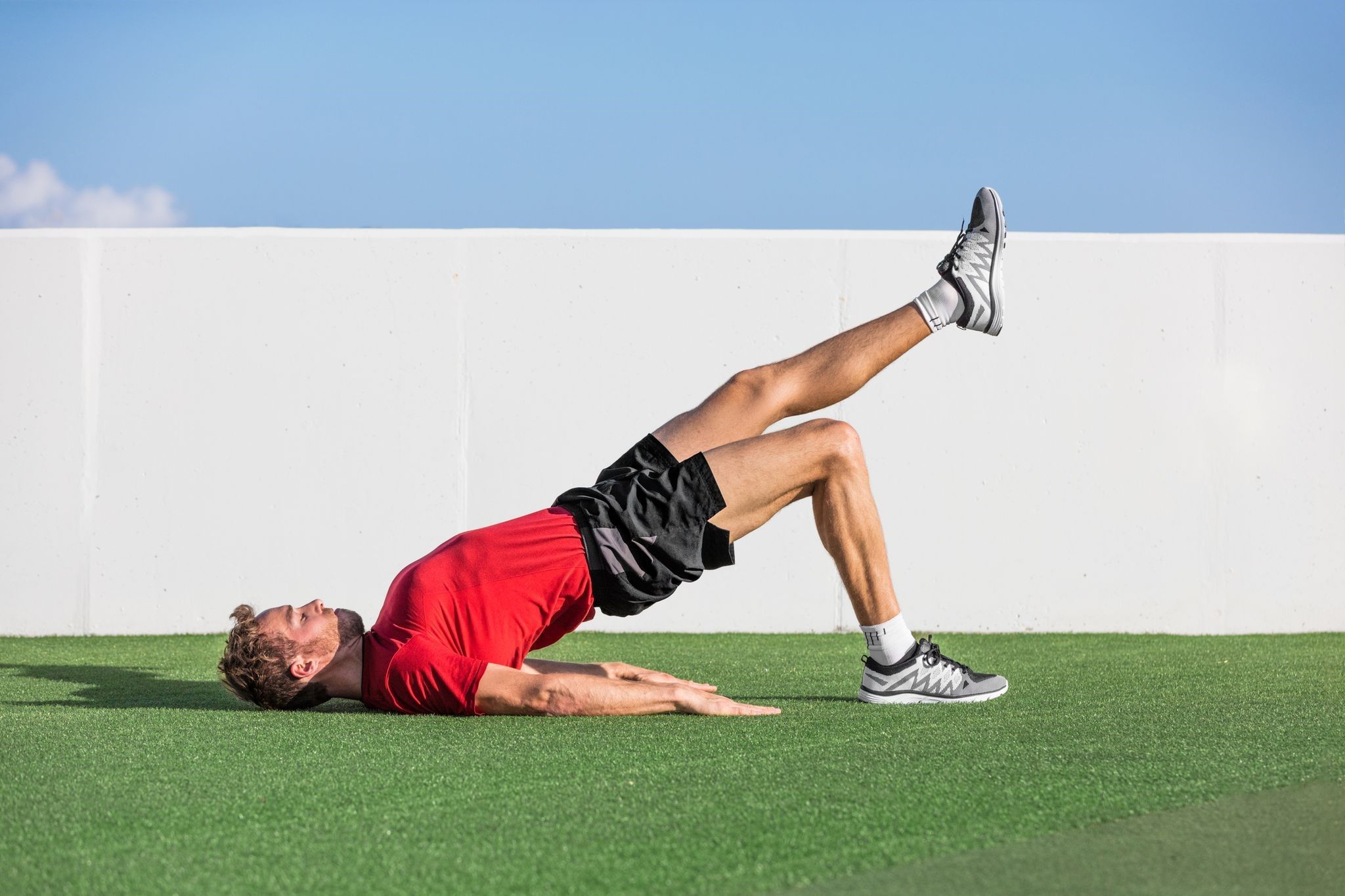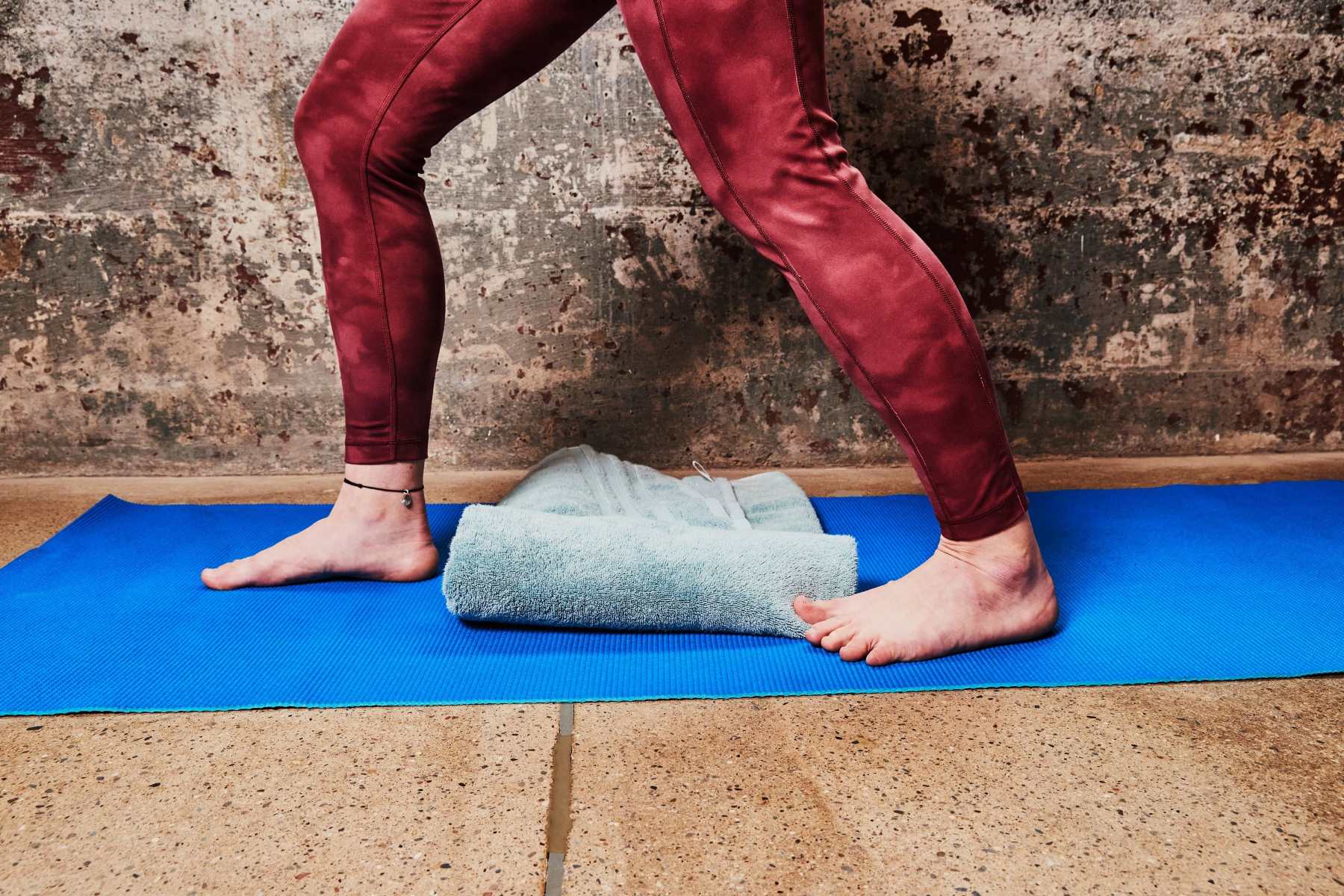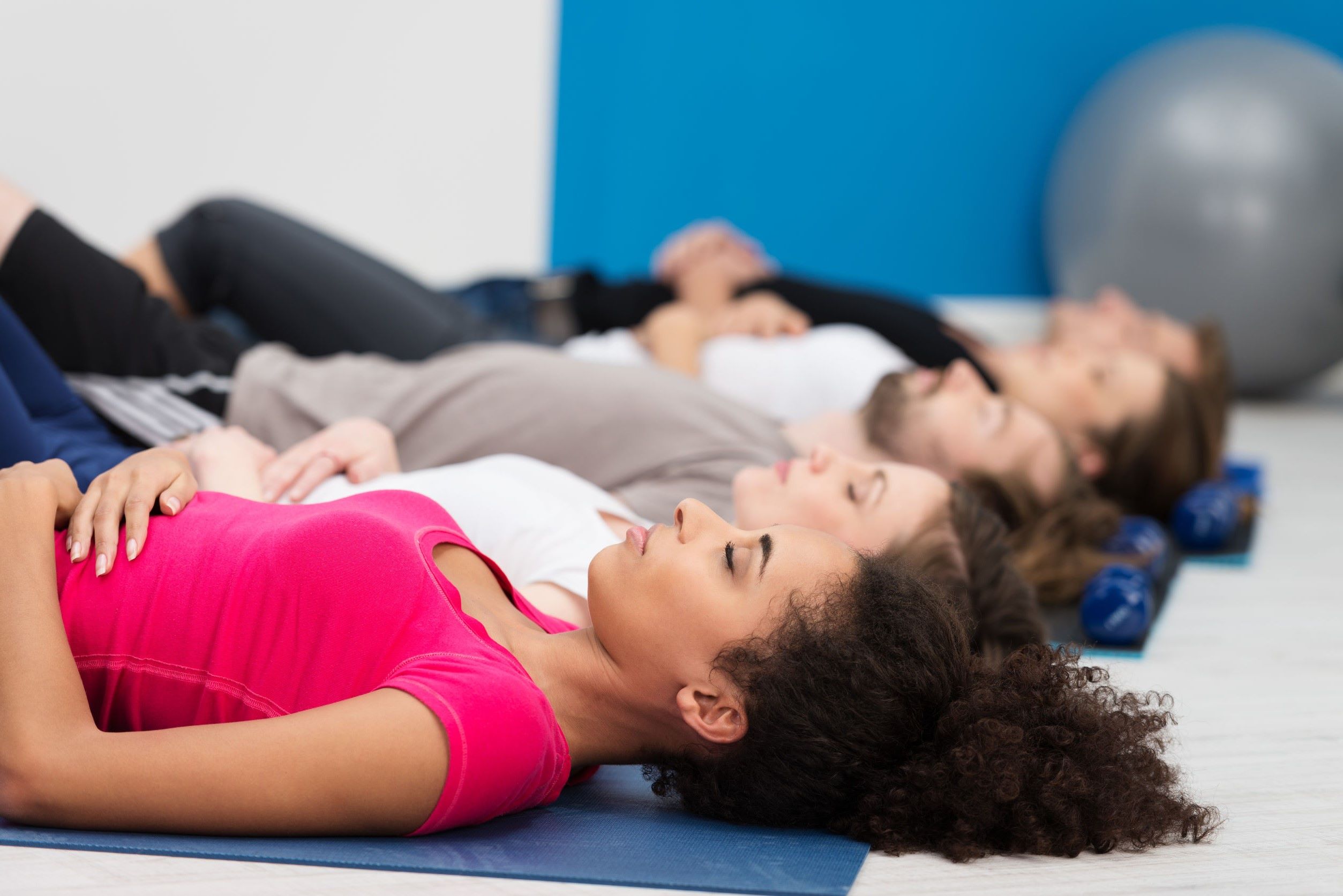Home>Training & Techniques>The Benefits Of Glute Bridges For Strength And How To Perform Them


Training & Techniques
The Benefits Of Glute Bridges For Strength And How To Perform Them
Published: March 3, 2024
Learn the benefits of glute bridges for strength training and discover effective techniques for performing them. Maximize your workout with expert tips.
(Many of the links in this article redirect to a specific reviewed product. Your purchase of these products through affiliate links helps to generate commission for Therunningadvisor.com, at no extra cost. Learn more)
Table of Contents
Introduction
The glutes, comprising the gluteus maximus, gluteus medius, and gluteus minimus, are among the most powerful muscles in the human body. They play a pivotal role in various movements, including walking, running, and jumping. However, in today's predominantly sedentary lifestyle, many individuals experience weakened glute muscles, leading to a range of issues such as lower back pain, hip discomfort, and compromised athletic performance.
Understanding the significance of glute strength is crucial for anyone seeking to improve their overall physical well-being and athletic prowess. One highly effective exercise for targeting and strengthening the glutes is the glute bridge. This simple yet impactful movement has gained widespread recognition for its ability to engage and activate the glute muscles, making it an essential addition to any strength training routine.
In the following sections, we will delve into the benefits of glute bridges for strength, explore the proper form and technique for performing this exercise, discuss various variations and progressions, and provide insights on how to seamlessly incorporate glute bridges into your workout regimen. Whether you are a fitness enthusiast, an athlete, or someone looking to enhance their functional strength, understanding the power of glute bridges and how to leverage them effectively can significantly elevate your fitness journey.
Understanding the Importance of Glute Strength
The gluteal muscles, commonly known as the glutes, are a group of three muscles located in the buttocks: the gluteus maximus, gluteus medius, and gluteus minimus. These muscles are not only responsible for the aesthetic appeal of a well-defined posterior, but they also play a crucial role in supporting the body's overall functionality and movement.
One of the primary functions of the glutes is to facilitate hip extension, which is essential for activities such as walking, running, and climbing stairs. Additionally, the gluteal muscles contribute to hip abduction and external rotation, providing stability and strength during various movements. Weak glute muscles can lead to a range of issues, including poor posture, lower back pain, hip discomfort, and decreased athletic performance.
In today's predominantly sedentary lifestyle, prolonged sitting and lack of physical activity can contribute to gluteal amnesia, a condition where the glute muscles become underactive and fail to engage properly during movement. This can lead to compensatory patterns, where other muscles, such as the lower back and hamstrings, take on additional stress, potentially leading to injury and discomfort.
Furthermore, strong glute muscles are essential for maintaining overall lower body strength and stability. Whether you are an athlete looking to enhance your performance or an individual seeking to improve functional strength, developing strong glutes is paramount. Strong glutes not only contribute to improved athletic performance, power, and speed but also play a crucial role in injury prevention, particularly in the lower back, hips, and knees.
Moreover, strong glutes are integral to everyday activities, such as lifting objects, maintaining balance, and performing various physical tasks with ease. By prioritizing glute strength, individuals can experience improved posture, enhanced mobility, and a reduced risk of injury in both athletic and daily life scenarios.
Understanding the importance of glute strength serves as a foundational element in any comprehensive fitness regimen. By prioritizing the development and maintenance of strong glutes, individuals can unlock a myriad of benefits, ranging from improved athletic performance to enhanced overall well-being. In the subsequent sections, we will explore the specific benefits of incorporating glute bridges into a strength training routine, providing actionable insights for harnessing the power of this exercise to achieve optimal glute strength and functionality.
Benefits of Glute Bridges for Strength
Glute bridges are a highly effective exercise for targeting and strengthening the gluteal muscles, offering a multitude of benefits for individuals of all fitness levels. Incorporating glute bridges into a regular workout routine can yield significant improvements in strength, stability, and overall physical performance. Here are the key benefits of integrating glute bridges into your strength training regimen:
-
Glute Activation: Glute bridges specifically target the gluteus maximus, the largest muscle in the gluteal group. By performing this exercise, individuals can effectively activate and engage the glute muscles, promoting muscle growth and enhanced functionality. This activation is crucial for individuals who may experience gluteal amnesia due to prolonged periods of sitting and inactivity.
-
Improved Posture and Core Stability: Strong glute muscles contribute to better posture and core stability. Glute bridges engage the entire posterior chain, including the lower back, hamstrings, and glutes, leading to improved spinal alignment and reduced risk of lower back discomfort. Additionally, a stable core is essential for various movements and activities, and glute bridges play a pivotal role in strengthening the core musculature.
-
Enhanced Athletic Performance: Athletes across various disciplines can benefit from the inclusion of glute bridges in their training routines. Strong glutes are essential for explosive movements, such as sprinting, jumping, and lifting. By strengthening the gluteal muscles through targeted exercises like glute bridges, athletes can experience improved power, speed, and overall performance in their respective sports.
-
Injury Prevention: Weak glute muscles can contribute to a range of injuries, particularly in the lower back, hips, and knees. By strengthening the glutes through exercises like glute bridges, individuals can reduce the risk of injury and enhance overall joint stability. This is especially beneficial for individuals recovering from previous injuries or seeking to prevent future musculoskeletal issues.
-
Functional Strength: Glute bridges are a functional exercise that mimics everyday movements such as standing up from a seated position or lifting objects. By improving glute strength and functionality, individuals can experience enhanced ease and efficiency in performing daily activities, contributing to an overall improved quality of life.
-
Versatility and Accessibility: Glute bridges can be modified and adapted to accommodate individuals of varying fitness levels and abilities. Whether performed with body weight, added resistance, or on unstable surfaces, glute bridges offer a versatile and accessible means of targeting the gluteal muscles, making them suitable for a wide range of individuals.
Incorporating glute bridges into a comprehensive strength training routine can yield substantial benefits, making it a valuable addition to any fitness regimen. By harnessing the power of glute bridges, individuals can experience improved muscle activation, enhanced performance, and a reduced risk of injury, ultimately contributing to a stronger, more resilient physique.
Proper Form and Technique for Performing Glute Bridges
Performing glute bridges with proper form and technique is essential to maximize the effectiveness of this exercise and minimize the risk of injury. By adhering to the correct form, individuals can ensure that the gluteal muscles are adequately engaged, promoting optimal muscle activation and growth. Here's a detailed guide on the proper form and technique for performing glute bridges:
Body Positioning:
- Starting Position: Begin by lying on your back on a comfortable exercise mat or the floor. Bend your knees and place your feet flat on the ground, ensuring that they are hip-width apart. Your arms should be resting by your sides with your palms facing down.
- Spinal Alignment: Maintain a neutral spine throughout the exercise, avoiding excessive arching or rounding of the lower back. Engage your core muscles to stabilize the spine and pelvis.
Executing the Movement:
- Hip Thrust: Initiate the movement by pressing through your heels and driving your hips upward towards the ceiling. Focus on contracting your glute muscles to lift your hips off the ground.
- Full Extension: Aim to achieve a straight line from your shoulders to your knees at the top of the movement, ensuring that your hips are fully extended without overarching your lower back.
- Squeezing the Glutes: At the top of the movement, consciously squeeze your glute muscles to maximize muscle activation. This is the peak contraction point of the exercise.
- Controlled Descent: Lower your hips back down to the starting position in a controlled manner, maintaining muscle engagement throughout the descent.
Breathing Technique:
- Inhalation: Inhale as you prepare to lift your hips off the ground, filling your lungs with air to support the movement.
- Exhalation: Exhale as you drive your hips upward and reach the top position of the bridge, maintaining a steady exhalation to aid in core stabilization.
Common Mistakes to Avoid:
- Overarching the Lower Back: Avoid excessive arching of the lower back at the top of the movement, as this can lead to unnecessary stress on the lumbar spine.
- Insufficient Hip Extension: Ensure that you fully extend your hips at the top of the bridge to effectively engage the glute muscles.
- Lack of Core Engagement: Maintain core stability throughout the exercise to prevent overarching of the lower back and promote overall spinal alignment.
By focusing on proper body positioning, executing the movement with precision, and incorporating the appropriate breathing technique, individuals can perform glute bridges with optimal form and technique. This not only enhances the effectiveness of the exercise but also reduces the risk of potential injuries, allowing individuals to reap the full benefits of this impactful glute-strengthening movement.
Variations and Progressions for Glute Bridges
Expanding upon the traditional glute bridge, various variations and progressions can be incorporated to add diversity and challenge to the exercise, catering to individuals with different fitness levels and goals. These variations not only target the gluteal muscles from different angles but also contribute to overall lower body strength and stability. By integrating these variations and progressions into a workout routine, individuals can continually challenge their glute muscles, promote muscle growth, and enhance functional strength.
1. Single-Leg Glute Bridge
The single-leg glute bridge, also known as the one-legged glute bridge, involves lifting and lowering the hips while balancing on one leg. This variation places greater emphasis on each glute individually, promoting balance and addressing any strength imbalances between the left and right sides. It also engages the core to a higher degree, contributing to improved stability and coordination.
2. Weighted Glute Bridge
Incorporating external resistance, such as a barbell, dumbbell, or resistance band, can significantly increase the challenge of the glute bridge. By placing the resistance on the hips or pelvis during the movement, individuals can enhance the strength-building potential of the exercise, leading to greater muscle activation and growth in the gluteal muscles.
3. Elevated Glute Bridge
Performing the glute bridge with the upper back and shoulders elevated on a bench or platform introduces a greater range of motion, intensifying the activation of the glute muscles. This variation allows for a deeper hip extension, leading to enhanced muscle recruitment and a more profound contraction at the top of the movement.
4. Marching Glute Bridge
The marching glute bridge involves lifting and lowering one leg at a time while maintaining the bridge position. This dynamic variation challenges the stability of the pelvis and engages the gluteal muscles asymmetrically, contributing to improved coordination and proprioception. It also targets the hip flexors and core to a greater extent, offering a comprehensive lower body workout.
5. Banded Glute Bridge
Utilizing a resistance band placed just above the knees during the glute bridge adds lateral resistance, effectively engaging the hip abductors and external rotators. This variation not only strengthens the glutes but also contributes to improved hip stability and alignment, making it particularly beneficial for individuals seeking to address weaknesses in the hip musculature.
6. Barbell Hip Thrust
The barbell hip thrust is a progression of the traditional glute bridge, involving the use of a barbell placed across the hips for added resistance. This advanced variation allows for greater loading of the gluteal muscles, promoting substantial strength gains and muscle hypertrophy. It is a popular choice among strength athletes and fitness enthusiasts aiming to maximize glute development.
By incorporating these variations and progressions into a glute-focused training regimen, individuals can continually challenge and stimulate their gluteal muscles, leading to enhanced strength, stability, and overall lower body functionality. These variations offer a diverse range of benefits, catering to individuals with varying fitness levels and objectives, ultimately contributing to a well-rounded and effective glute strengthening routine.
Incorporating Glute Bridges into Your Workout Routine
Integrating glute bridges into your workout routine can significantly enhance lower body strength, stability, and overall physical performance. Whether you are a seasoned athlete, a fitness enthusiast, or someone embarking on a journey to improve functional strength, incorporating glute bridges offers a multitude of benefits. Here's a comprehensive guide on seamlessly integrating glute bridges into your workout regimen to maximize their impact:
1. Warm-Up Activation
Prior to engaging in more intense lower body exercises, incorporating glute bridges as part of your warm-up routine can effectively activate the gluteal muscles. By performing a set of bodyweight glute bridges, you can prime the glutes for subsequent movements, ensuring optimal muscle engagement and reducing the risk of compensation by other muscle groups.
2. Standalone Glute Workout
Designating a specific portion of your workout to focus solely on glute strengthening can yield substantial benefits. By incorporating variations of glute bridges, such as single-leg glute bridges, weighted glute bridges, and elevated glute bridges, you can create a comprehensive glute-focused workout. This targeted approach allows for concentrated muscle activation and growth in the gluteal region.
3. Superset or Circuit Training
Incorporating glute bridges into supersets or circuit training can add an element of intensity and efficiency to your workout. Pairing glute bridges with complementary exercises, such as squats, lunges, or deadlifts, creates a synergistic effect, targeting multiple muscle groups while maintaining an elevated heart rate. This approach not only enhances muscular endurance but also contributes to a well-rounded lower body workout.
4. Posterior Chain Emphasis
For individuals seeking to prioritize the development of the posterior chain, including glute bridges in a workout routine can be highly beneficial. By combining glute bridges with exercises that target the hamstrings, lower back, and calves, you can create a comprehensive posterior chain workout. This approach promotes balanced muscle development and overall lower body strength.
5. Progressive Overload
As your strength and proficiency in performing glute bridges improve, incorporating progressive overload can further enhance the effectiveness of this exercise. Gradually increasing the resistance, repetitions, or time under tension during glute bridges challenges the muscles, leading to continued growth and strength development in the gluteal region.
By strategically integrating glute bridges into your workout routine, you can harness the full potential of this exercise to achieve optimal glute strength and functionality. Whether used as a warm-up activation, a standalone glute workout, or as part of a comprehensive training approach, glute bridges offer a versatile and impactful means of enhancing lower body strength and stability. With a tailored approach to incorporating glute bridges, individuals can experience improved athletic performance, reduced risk of injury, and a stronger, more resilient physique.
Read more: How Collagen Can Benefit Runners
Conclusion
In conclusion, the glute bridge stands as a foundational exercise for enhancing gluteal strength, stability, and overall lower body functionality. Understanding the significance of strong glute muscles and the pivotal role they play in everyday movements and athletic performance is essential for individuals seeking to optimize their physical well-being. By incorporating glute bridges into a comprehensive strength training routine, individuals can unlock a myriad of benefits, ranging from improved posture and core stability to enhanced athletic performance and injury prevention.
The benefits of glute bridges extend beyond the realm of fitness, permeating into everyday activities and functional strength. The activation and engagement of the gluteal muscles through targeted exercises like glute bridges contribute to improved mobility, reduced risk of injury, and enhanced ease in performing daily tasks. Moreover, the versatility and accessibility of glute bridges make them suitable for individuals of varying fitness levels and abilities, ensuring that everyone can harness the power of this impactful exercise.
Proper form and technique are paramount when performing glute bridges to maximize their effectiveness and minimize the risk of injury. By focusing on body positioning, executing the movement with precision, and incorporating the appropriate breathing technique, individuals can ensure optimal muscle activation and growth in the gluteal region. Additionally, integrating variations and progressions of the glute bridge adds diversity and challenge to the exercise, catering to individuals with different fitness levels and goals.
Seamlessly integrating glute bridges into a workout routine offers a holistic approach to lower body strength and stability. Whether used as part of a warm-up activation, a standalone glute workout, or in conjunction with other exercises, glute bridges provide a comprehensive means of targeting and strengthening the gluteal muscles. With a tailored approach to incorporating glute bridges, individuals can experience improved athletic performance, reduced risk of injury, and a stronger, more resilient physique.
In essence, the glute bridge serves as a cornerstone in the pursuit of optimal gluteal strength and functionality. By recognizing its significance, mastering proper form and technique, exploring variations and progressions, and seamlessly integrating it into a workout routine, individuals can harness the full potential of the glute bridge to achieve a stronger, more resilient lower body, ultimately enhancing their overall physical well-being and performance.











